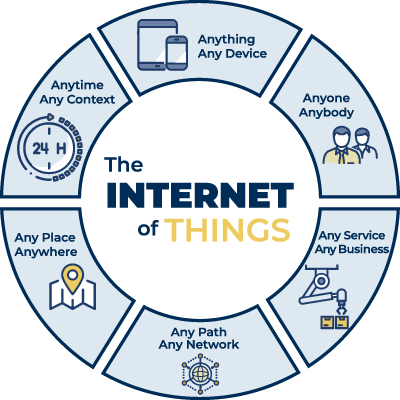Text
0 notes
Text
Blockchain Development Procedure
The execution of blockchain technology has begun fostering smart business operations. This technology has changed and shaped a lot of industries like health care, supply chain, financial services and a lot more.
Based on CB Insights, the firms like Walmart and Pfizer have succeeded in embracing blockchain in medication tracking and food security.
When seeking to purchase the blockchain, entrepreneurs need to comprehend the complete procedure of blockchain development.
This article aims to assist entrepreneurs, founders, innovators and merchandise managers to get acquainted with this growth process to incorporate blockchain into their ventures.
Following is a step-by-step technique of the blockchain development process.
What's blockchain?
A blockchain is a chain consisting of time-stamped digital records, known as cubes. Every record from the blockchain is traceable and tamper-proof. The technology applies the following benefits:
Decentralization: to eliminate the only points of failure in the system.
Trust: through mass consensus.
Security: through unalterable records of trades.

To construct a scalable and secure blockchain-based application, the following are the vital measures.
1. Know the problem and aim
Defining a problem statement is an initial step before developing a solution. It is vital to work out each of the issues to propose a remedy for them.
Make sure the time and efforts in the blockchain would add value to your business.It is also feasible to relocate your present application to the blockchain network without building it from scratch.
Know a blockchain use-case for your application and make sure if your idea requires the blockchain solution.
For example, being a food provider, if you are looking to develop a blockchain-powered supply chain application, it's vital to understand the many different use-cases of this application and how it can be helpful to the business as well as the customer.
As soon as you're clear about the requirement of a blockchain-based solution for your enterprise, the next step involves choosing the right blockchain platform to the own project.
2. Find out the Acceptable blockchain platform
Choosing the right platform to construct a decentralized application is every bit as important. Following would be the blockchain programs you can choose according to their functionality and mechanics:
Ethereum:

It's an open-source, people blockchain-based distributed computing system. It features in developing decentralized software with intelligent contracts. It provides a Remix IDE tool to create wise contracts directly from the browser. Ethereum employs the Ethash algorithm, which consumes more memory.
Hyperledger Fabric:

Hyperledger Fabric is an open-source blockchain platform acceptable for construction decentralized solutions that should remain unavailable to the general public. It supports building distributed ledger solutions on permissioned networks in which players have authorized identities. Golang is your language that supports the chaincode.
Hyperledger Sawtooth:

Initially came from Intel, it's used to develop permissioned blockchain networks.Every user in the system waits for a random duration.The first user that completes the waiting period becomes the chief of this new block.
This platform is excellent for enterprise-grade and scalable applications to come up with your blockchain-based project.After selecting the blockchain platform according to a consensus mechanism, the next step is to embrace an ideation process for assessing the technical components and the roadmap for your product.
3. Ideation
After identifying the issue and the required blockchain platform, it's important to discuss ideas for creating the program.
This step incorporates precise evaluation, formulation and prioritizing use cases for blockchain implementation. Additionally, it includes selecting the elements to get added for on-chain and off-chain business entities. Make sure that you keep a note of alpha, beta and prepared to launch variants of the program. While formulating the thoughts, make a note of:
Workflow Strategy
The need of building the program on a permissioned or permission-less network
Selection of front-end programming language
The need for External servers and database
When the ideas are formulated, be sure to prepare a proof-of-concept to show the viability of the product.
4. Preparing a proof-of-concept
A proof-of-concept provides a very clear notion to demonstrate that a blockchain job's practical capacity and be more precise about a theoretical build-up or a model.Whilst Creating a PoC to your project, the next stages can guide you to show the project's feasibility:
Theoretical Build-up
Every project requires theoretical cases to assist end-users comprehend the viability and productivity of the goods. The proposals are created to describe the parameters of this undertaking.
Following the theoretical build-up and received feedback from the stakeholder, you need to be precise about the model, including
sketches
prototype
Information structure
Mock-ups
Designs
Tested Products
Once the PoC gets approved by stakeholders, concentrate on:
Groundwork of technical and visual designs of the program
Drafting a record that includes the need of technical GDPR compliance
Creating user interfaces for every component of the Program
Designing APIs to integrate with user interfaces for conducting the applications at the backend.
Once the user-interfaces and admin games are developed for the program, it is possible to proceed with the evolution procedure.In the development phase, the program is built. Additionally, it is crucial to construct APIs for different use-cases of the program. APIs are needed to:
The application is developed under different stages.
Pre-alpha phase: This is the phase when the developed program doesn't undergo formal testing.
Alpha phase: In this phase, the developers test the software utilizing white-box methods.
Beta Stage: This, the program includes the complete feature set, but it might have bugs that are unknown.
Advanced Beta Stage: Develirs that the Last product. Here, the program is analyzed thoroughly.
Production Phase: The developed program is now ready to get delivered.
Deployment stage: Before an program goes live, it is deployed on the evaluation network to test its functionalities.
Provisioning Stage: Administrators take control over to decision of the program variants to be deployed for various resources.
Hosting: After provisioning a program, it should be hosted on the main chain.
It is vital to design and produce the application just so it doesn't become changed even after the inclusion or upgradation of elements.
0 notes
Text
Applications of AI Development
The drive for technological inventions has revolutionized and raised the standards of digitization. With such digitally growing tech-trends, AI has also poised the transformation of digital solutions across a multitude of industries. Right from voice-powered personal assistants like Alexa and Siri, you will find numerous AI applications driving digitization into various aspects of our day-to-day lives. The need and demand for climbing AI-based smart devices and digital goods have boosted the AI development company to design and develop more advanced AI programs to improve our daily lives.

AI growth business is growing and looking its way to nurture and facilitate numerous applications. Some of them are given below.
Healthcare
AI's part in healthcare is extremely crucial, directly from protecting patients' documents to helping surgeries. AI-powered workflow urges and software help physicians free-up their programs and prevent time wastage by alerting the procedures to a greater extent. Apart from patients, AI functions as a supportive tool for acute investigation by analyzing tissue samples.

Finance
The fund sector entirely depends on real-time reporting, accuracy and managing a considerable number of information. Ai can efficiently improve these significant features of finance and banking through machine learning, algorithmic trading, business intelligence, chatbotsand automation and predictive analysis. AI-enabled solutions also help predict the best portfolio or stock based on preferences by scanning actual market data. Because of this, this financial information helps to generate actionable reports fast with no human intervention.
Travel and Tourism
AI-enabled smart devices play a very important role in directing effective paths to traveling the desired places and making travel arrangements. The AI-based travel supporters can suggest travel hints and bookings, search the regional landmarks, dining and accommodation options. Chatbots are forcing the traveling industry rapidly by imparting human-like interaction with consumers for travel advice quickly and efficiently.
Personalized Shopping Experience
The adoption of AI software, devices, and solutions helps online shopping shops use a tiny data of the followed connection by customers. It results in getting timely alerts, contacts, messages in accordance with the user demands and hunt for purchasing different items. Online stores can also change currency and interface mechanically, send alerts about discounts on best-selling products, and give time constraints on desirable items.
Security and Surveillance
Human beings can't supervise and track a number of channels continuously with many feeds coming out of cameras. On the flip side, AI growth results in supply safeguarding technical answers concerning surveillance and security. Integrating AI with picture processing, face and voice recognition tools with information science may give remarkably outstanding devices for safety issues.
Besides these applications, AI-powered robots are more effective in handling human-like activities like thinking and resolving problems. Additionally, the marketing tools with AI technologies are in great demand due to their capacity in creating in-depth customer insight reports, program business meetings and many different functionalities. These tasks are irrespective of human intervention.
AI is affecting human lifestyles across multiple industries and platforms with innovative smart devices and alternatives. Factors such as speed, precision, efficacy and human functioning capacities are solely accountable for broader acceptance and execution of AI technology into different sectors.
0 notes
Link
0 notes
Link
0 notes
Text
What is the Internet of Things?
The Internet of Things, or IoT, describes to the billions of physical apparatus around the world that are currently connected to the internet, all collecting and sharing data.
As a result of the advent of super-cheap computer chips and the ubiquity of wireless networks, it is possible to turn anything, from something as little as a tablet computer to something as big as an aeroplane, into a part of the IoT. Connecting up all these different objects and incorporating sensors to them provides a level of digital intelligence to apparatus that would be differently dumb, enabling them to communicate real-time information without requiring a human being.The Internet of Things is creating the fabric of the world around us smarter and more responsive, merging the digital and physical universes.
0 notes
Text
SDLC Models
There are various software development life cycle models defined and made which are followed through the software development process. These models are also called Software Development Process Models". Each process model follows a collection of measures unique to its kind to ensure success in the process of software development.
Following are the main and popular SDLC versions followed in the industry
Spiral Model
V-Model
Big Bang Model
Other Relevant approaches are Agile Model, RAD Model, Rapid Application Development and Prototyping Models.
0 notes
Text
What are The phase of Software development life cycle
SDLC is a process followed to get a software project, within a software organization. It consists of a comprehensive plan describing how to create, maintain, replace and alter or enhance particular applications. The entire life span defines a process for enhancing the quality of software and the total development process.
The next figure is a graphical representation of the various phases of a typical SDLC.
Stages of SDLC
An average Software Development Life Cycle consists of the following stages −
Requirement analysis has become the most important and basic point in SDLC. It is done by the senior members of the group with inputs from the client, the sales division, market surveys and domain specialists in the business.This information is then utilized to plan the basic project approach and to run product feasibility study in the economic,operational and technical areas.
Planning for the quality assurance requirements and identification of the dangers associated with the job is also done in the planning phase. The results of the technical feasibility analysis is to define the various technical approaches that may be followed to execute the project with minimal risks.
Stage 1: Defining Requirements
When the demand analysis is done the next step is to clearly define and record the product prerequisites and have them approved from the customer or the market analysts.This is achieved through an SRS (Software Requirement Specification) file which consists of all of the product requirements to be developed and designed during the project life cycle.
Stage 2: Construction or Developing the Product
In this stage of SDLC the real development starts and the item is built. The programming code is generated according to DDS in this phase. If the design is done in a detailed and organized manner, code generation can be accomplished without a lot of hassle.
Developers must adhere to the coding guidelines defined by their company and programming tools like compilers, interpreters, debuggers, etc. are utilized to generate the code.The programming language is chosen with regard to the form of software being developed.
Stage 3: Testing the Product
This stage is usually a subset of all of the stages as in today's SDLC models, the testing tasks are mostly involved in all the phases of SDLC. However, this stage refers to the testing only point of the product where product defects are reported, monitored, fixed and retested, until the item reaches the quality standards defined in the SRS.
Stage 4: Deployment from the Sector and Care
Once the item is tested and ready to be deployed it is released formally in the proper sector. Occasionally merchandise installation happens in stages as per the business strategy of that organization. The product may first be published in a limited segment and analyzed in the actual business environment (UAT- User acceptance testing.
Then depending on the opinions, the product might be released as it is or with suggested enhancements in the targeting market segment. After the item is released from the current market, its upkeep is done to your existing customer base.
0 notes

